|
What was Leon Battista Albeti known as?Why? |
|
the theorist of Southern renaissance; books written: "On Painting" "on sculpture" "on architecture" |
| |
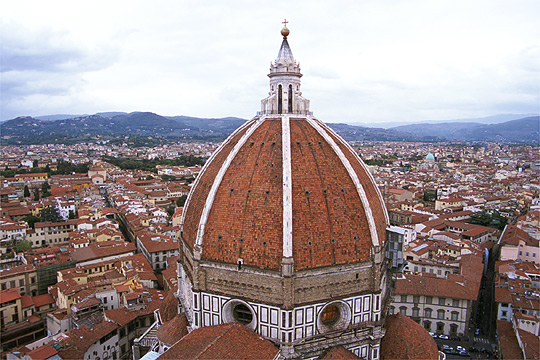
|
|
Filippo Brunelleschi, Dome of Florence Cathedral
1417-1436, lantern completed 1471, architecture |
| |
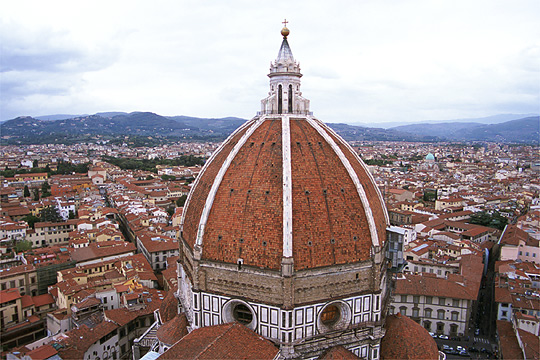
SIGNIFICANCE |
|
- won ability to design the dome form competition- did a whole range of things that showed he had more curiosity than just for artfascinated with laws of perspective"re-inventor of perspective" |
| |
|
Whose patronage provided the necessary means for the renaissance to flourish in Italy? |
|
The Medici family |
| |
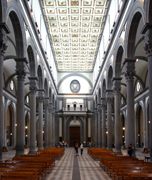
|
|
Filippo Brunelleschi, Church of San Lorenzo
1421-1428, 1442-1446, architecture |
| |
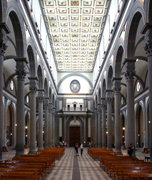
SIGNIFICANCE |
|
- Brunelleschi used classical aniquity- ex: coffering of roof is temple-like- use of columns"Quotes classical antiuity by using their forms"- Medici's liked this look |
| |
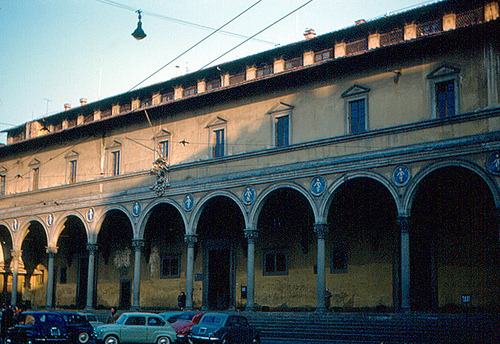
|
|
Filippo Brunelleschi, Foundling Hospital, Florence
designed 1419, built 1421-1444 |
| |
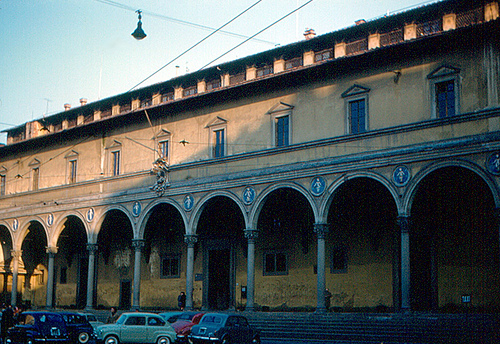
SIGNIFICANCE |
|
- funded by Medici's to represent their charitable notions- another gesture of their pioty; also to show the community that they are giving back, not only to people in their class, but to others [orphans] |
| |
|
guild |
|
controlled mercantile activities; organizations; some guilds more wealthy than others (gold > stonemason guild) |
| |
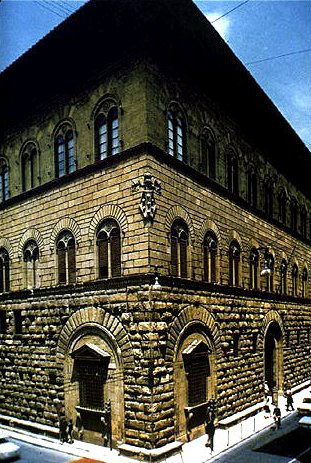
|
|
Michelozzo di Bartolommeo, Palazzo Medici-Ricardi, Florence
1444, architecture |
| |
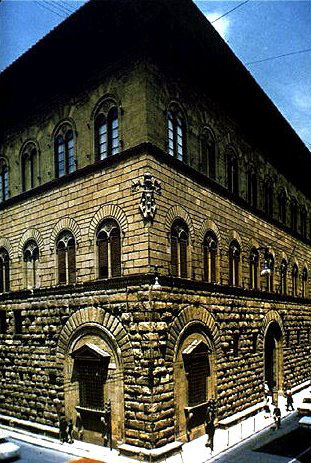
SIGNIFICANCE |
|
1st floor: the actual guild of silk and gold- outside made to look impenetrable, rough, prison-type
2ndfloor: management side of running the guild- brick on the outside
3rd floor:where family lived- outside walls smoothed and clean; meaning no business up there- stone oranges decorated walls on outside symbolizing their family-center of building was an open core |
| |
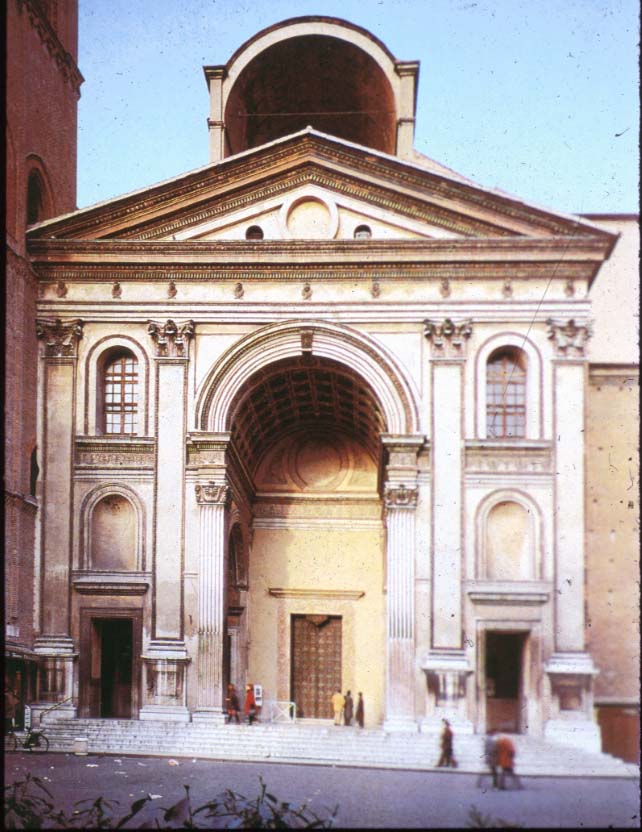
|
|
Leon Battista Alberti, Church of Saint Andrea
1470, architecture |
| |
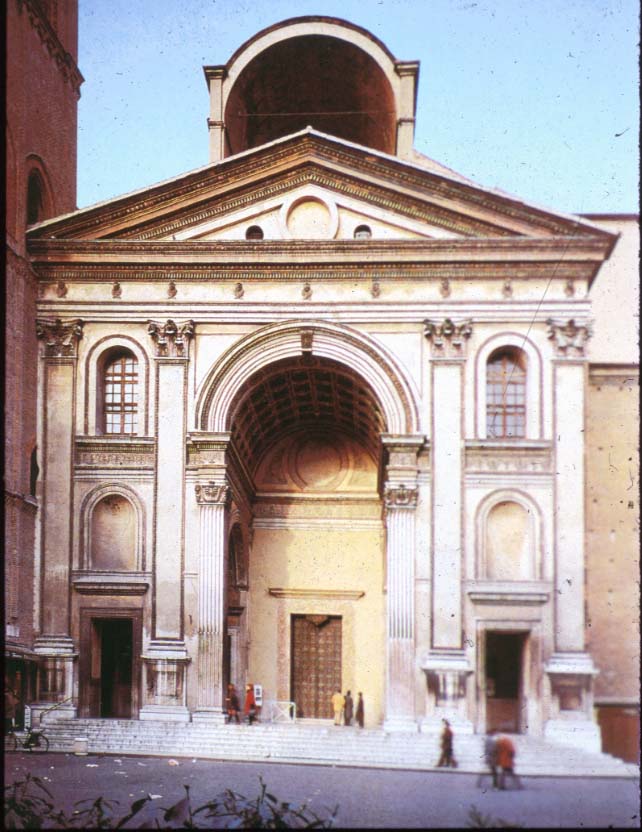
SIGNIFICANCE |
|
Similar to the Pantheon- fac*ade= making churches look like ancient Roman temples-Geometry also helped rational thinking |
| |
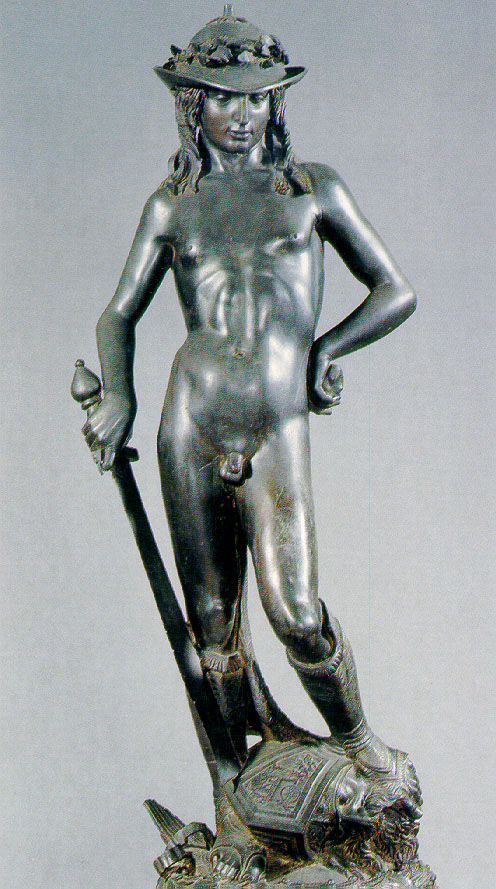
|
|
Donatello, David
1460s, bronze |
| |
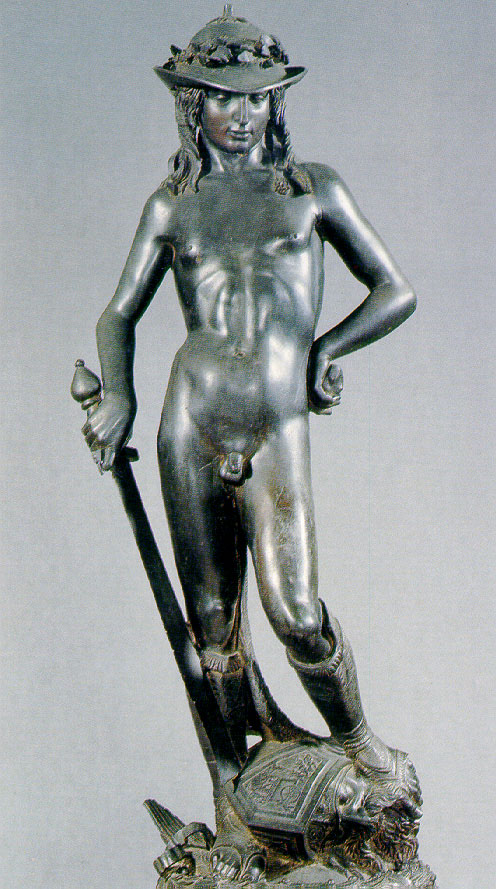
SIGNIFICANCE |
|
interested in rebirth of classical antiquity- Medici family commissioned him- david from goliath story- nude in status to represent his simplicity- he is young- his left hand holds the stone used; right hand is Goliath's sword- he's standing in victory* first free standing bronze status since classical antiquity* set in contraposto; considered more graceful way to stand at rest |
| |
|
contraposto |
|
for a statue; standing on one leg really, 'cross posture'; considered more graceful way to stand at rest |
| |
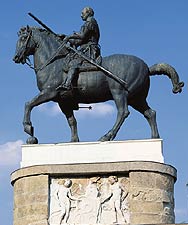
|
|
Donatello, Equestrian Monument to Erasmo da Narmi (Gattamelata), Padau
1443-1453, bronze |
| |
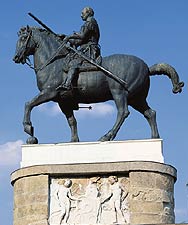
SIGNIFICANCE |
|
first equestrian statue since classical antiquity- very difficult to make a horse out of metal because all the weight is on 3 or 4 legs- Gattemelata's face is modern and unexpressive aside form his tired look- his armor; similar to Roman skirt of armor [not actually what he would have worn]- ^ done to make a comparison |
| |
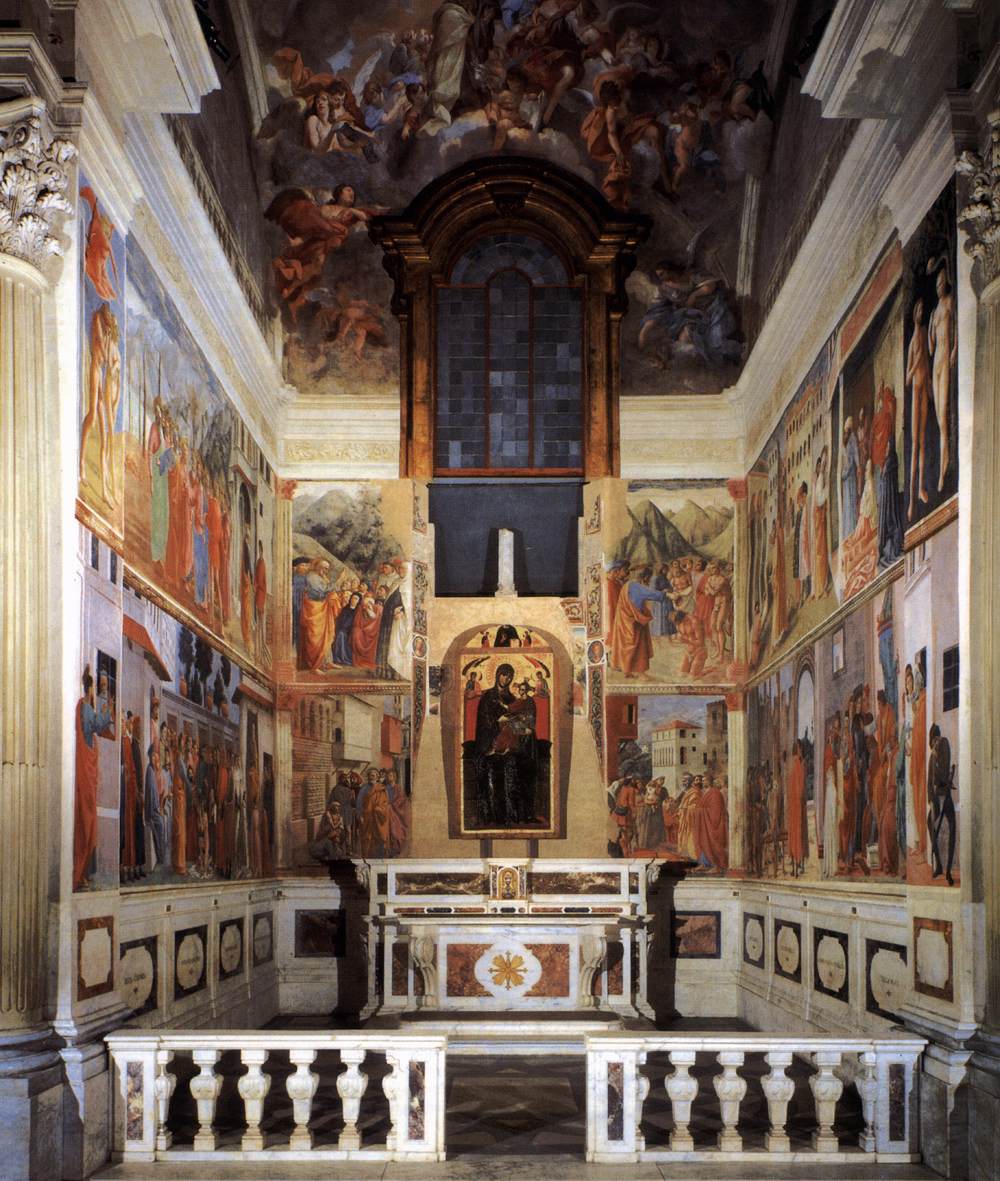
What is this? |
|
Brancacci Chapel |
| |
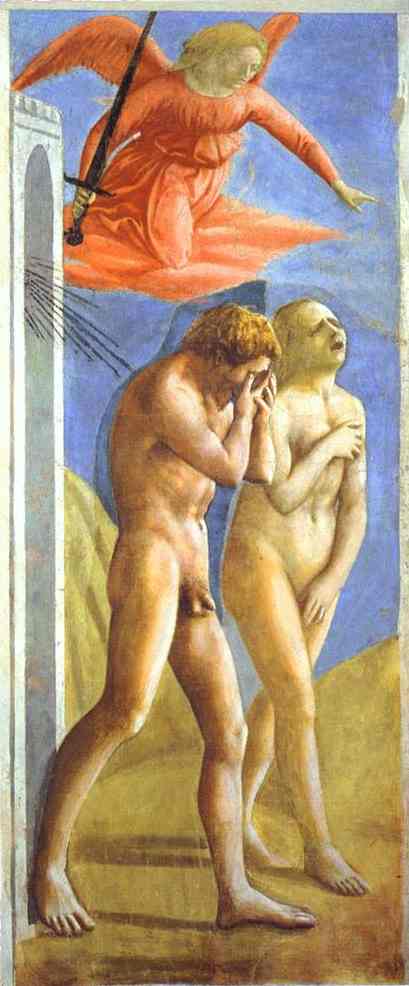
|
|
Massaccio, The Expulsion from Paradise, Brancacci Chapel
1427, fresco |
| |
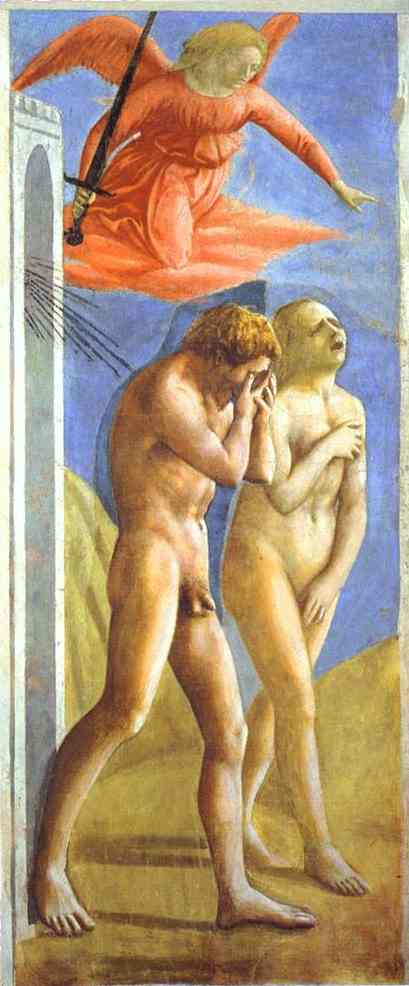
SIGNIFICANCE |
|
Figures are shown as though they are 3 dimensional- ^ done by using highlights and shadow- Adam's abdomen is awkward |
| |
|
Masaccio's 3 key rules to Renaissance painting: |
|
1. you must make fresco2. painting must tell a story that one can read by looking at the actions (hand gestures, faces, etc)3. the value of painting is based on the skill of the artist, not the cost of the materials that went into making it |
| |
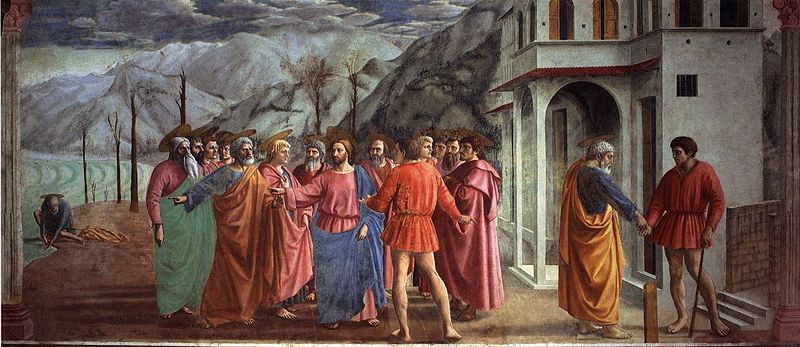
|
|
Masaccio, Tribute Money, Brancacci Chapel, Church of Santa Maria del Carmine
1427, fresco |
| |
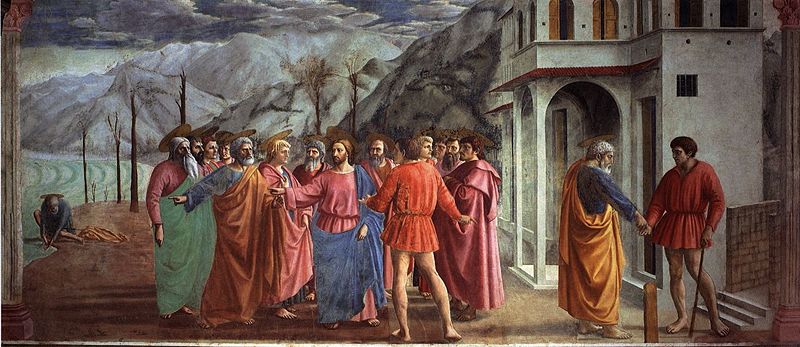
SIGNIFICANCE |
|
- tax collector with his hand out for money- Christ pointing to his right, Peter pointing same way- Christ directing Peter to go to water's edge and get money needed from a fish that will appear- on left hand side, we see peter getting the money- right hand side, part 3, Peter paying tax collector*high priced painting due to painter's skill* used atmospheric perspective: as you go further away, things get lighter and lighter- Christ's head is vanishing point- everyone has halo but tax collector |
| |
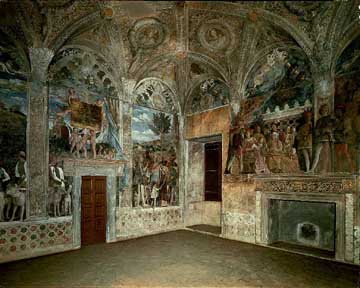
|
|
Andrea Mantegna, Frescoes in the Camera Picta, Ducal Palace, Mantua
1465-1474, fresco |
| |
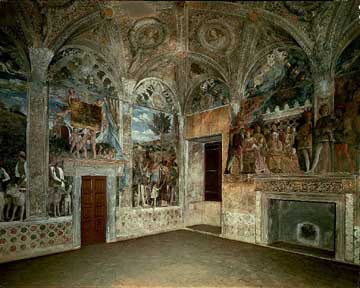
SIGNIFICANCE |
|
- painting contains tromp L'oeil (to trick the eye)- captures illusionism; sense of seeing out |
| |
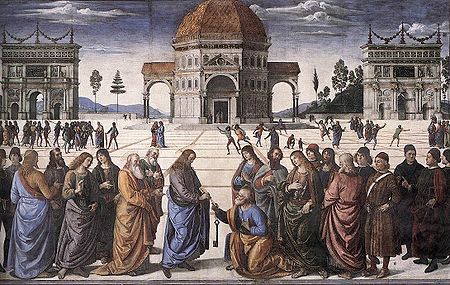
|
|
Pergino, Delivery of Keys to Saint Peter, Sistine Chapel, Vatican
1482, fresco |
| |
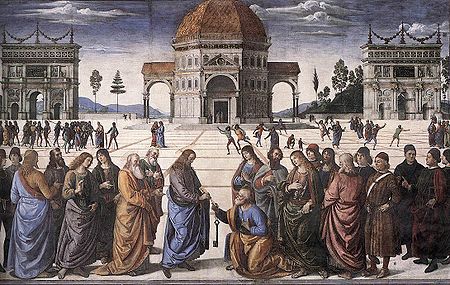
SIGNIFICANCE |
|
patrons are painted in the background- symbolizes Christ approving Peter of making a church in his name- each side of paiting has arches; back from classical age- arches symbolized victories for troops back in Roman times; meant to represent victory of Catholic Church |
| |
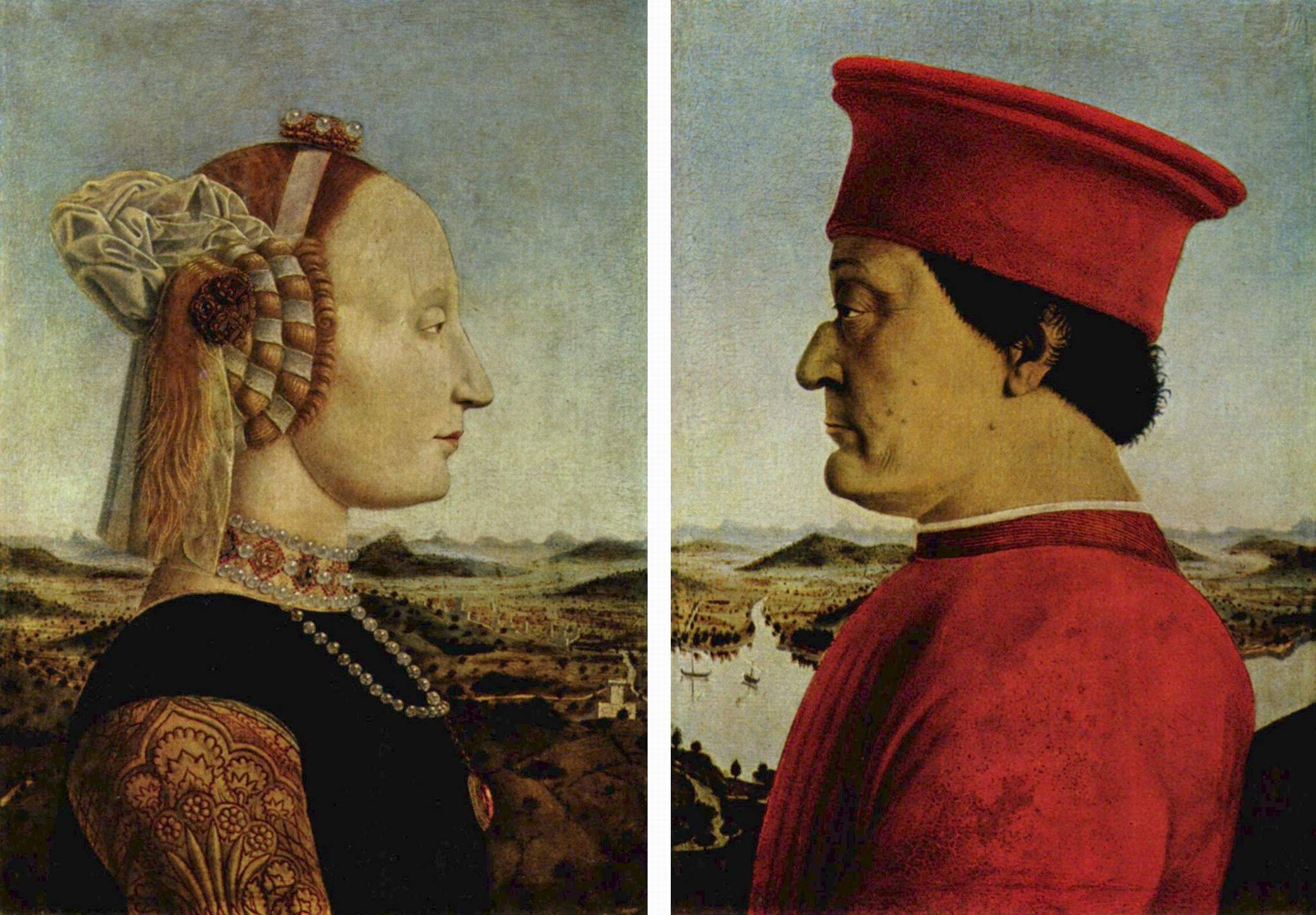
|
|
Pierro della Francesca, Battista Sforza and Frederico da Montefeltro
1472, oil on wood panel |
| |
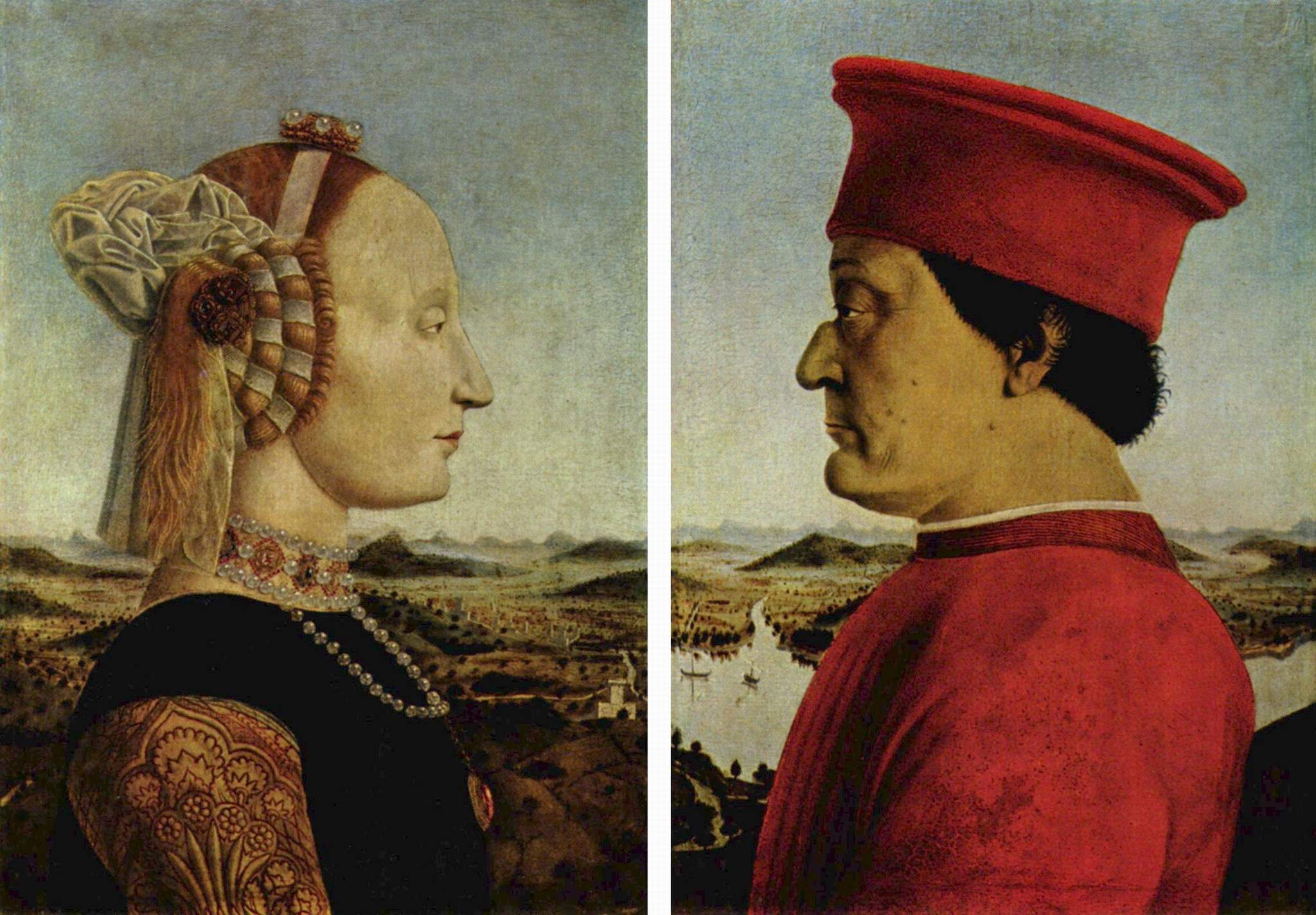
SIGNIFICANCE |
|
- chunk of nose is missing because of a duel where his opponent's sword hit just above his nose* significant: southern renaissance artist using oil and paint |
| |
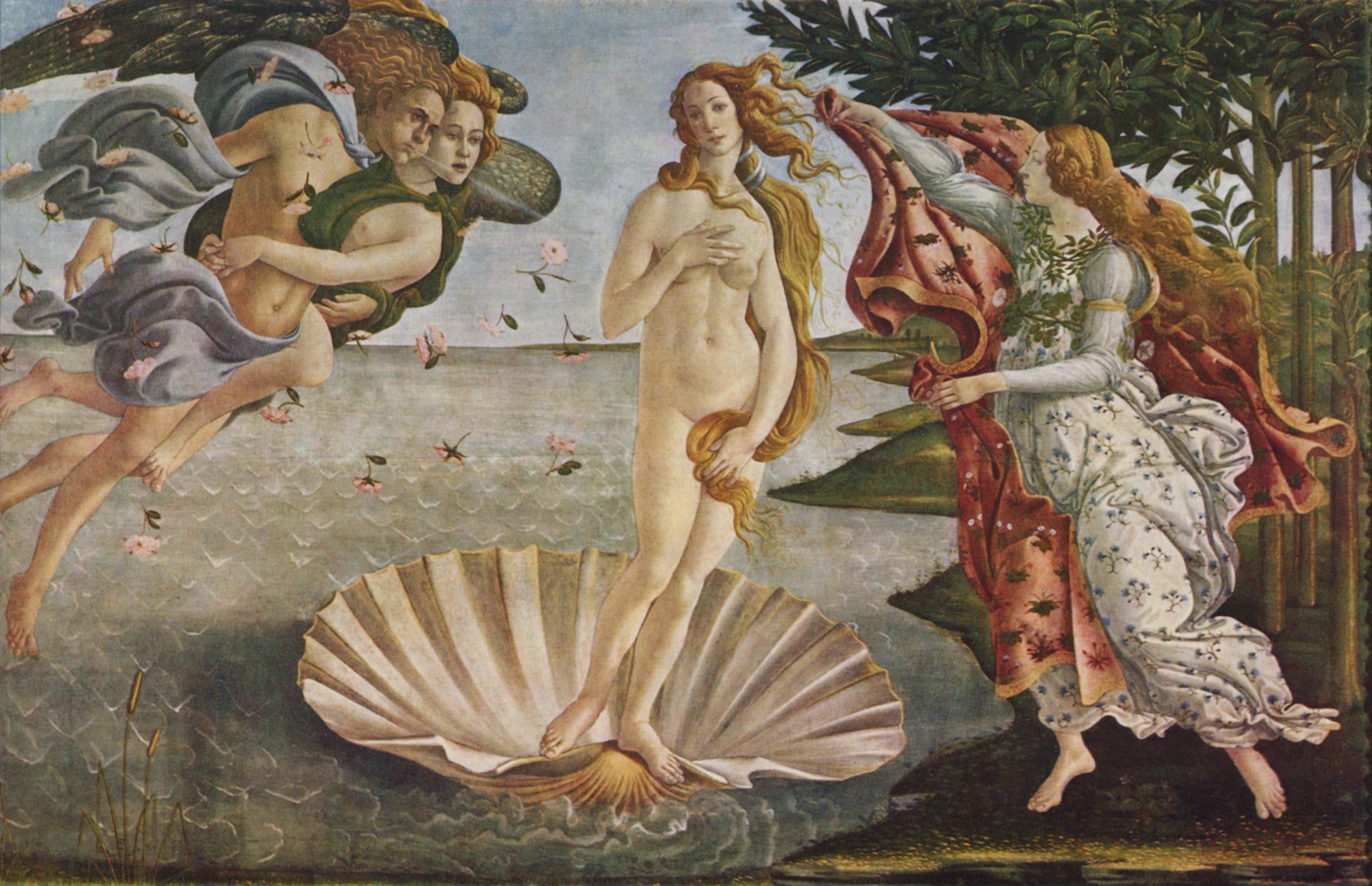
|
|
Sandro Botticelli, The Birth of Venus
1484-1486, tempera on canvas |
| |
|
Who was the town crier saying the world would end in 1500? |
|
Savonarola |
| |
|
Why are there very few Botticelli paintings left? |
|
he worried for his soul since he painted for the Medici family, so he tried to destroy as many as he could in order to avoid bad judgement |
| |
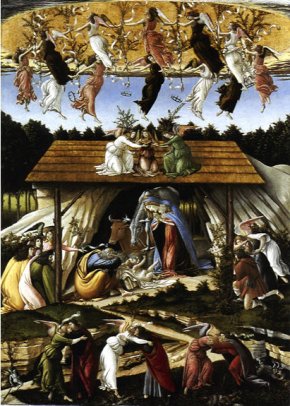
|
|
Botticelli, Mystic Nativity
1500, oil on canvas |
| |
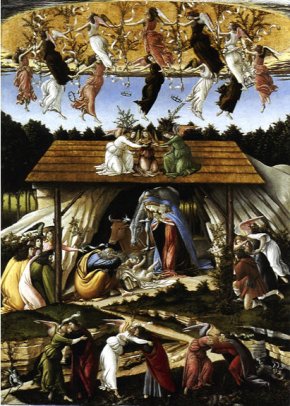
SIGNIFICANCE |
|
his 'last' painting he wanted to be judged on- tried to do as much damage control he believes as possible- painting has fiery circle above to represent end of world |
| |
